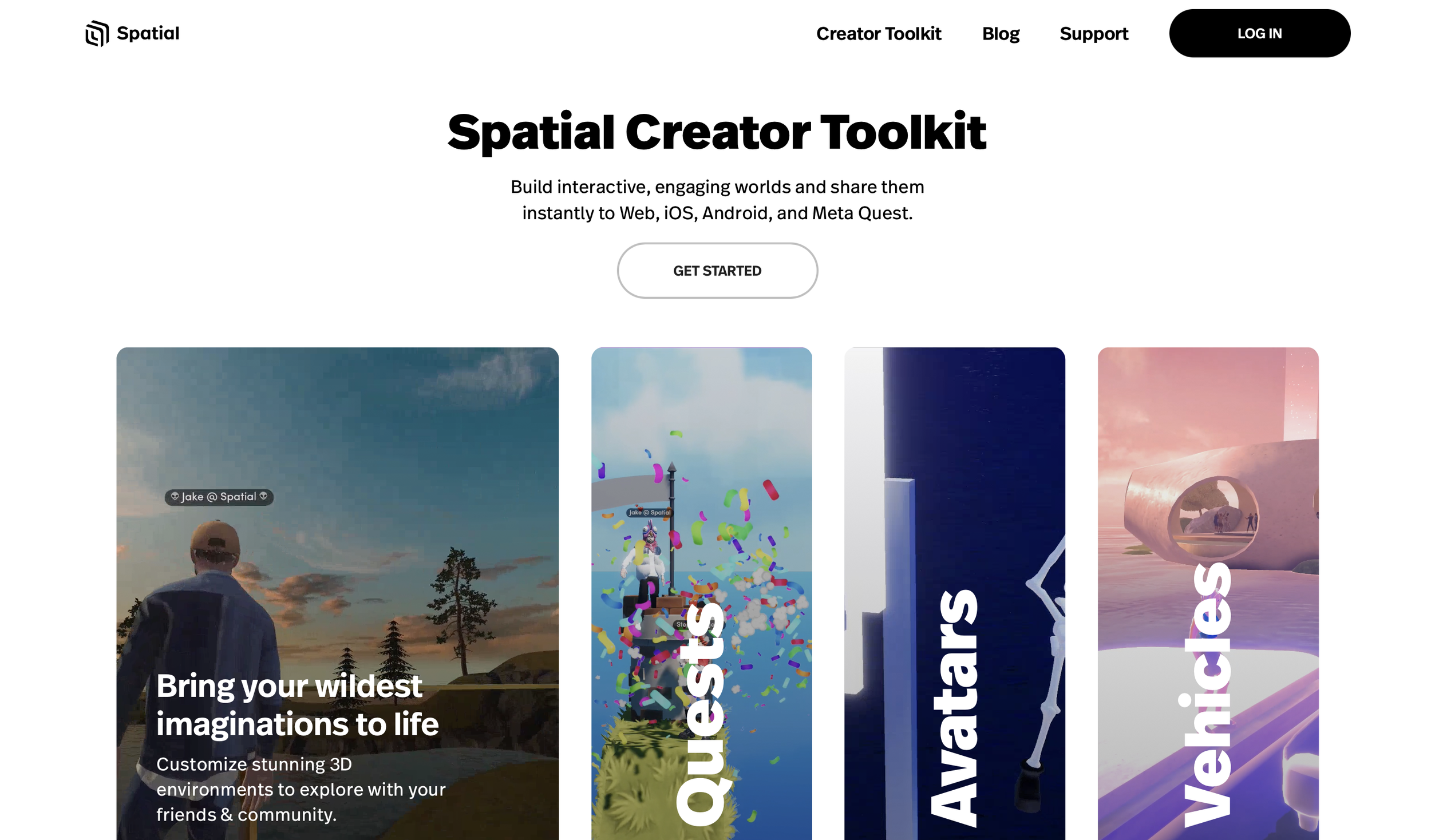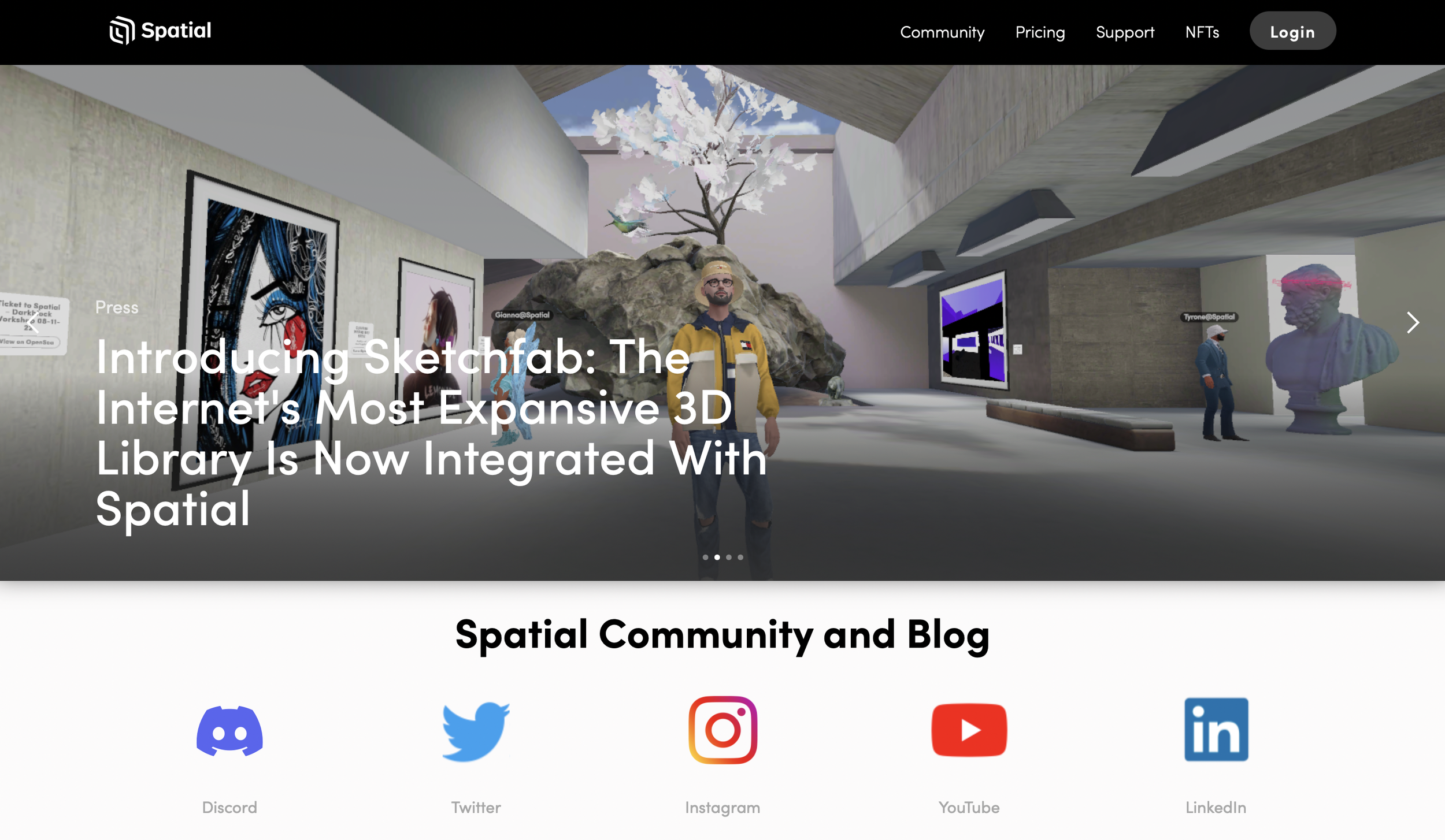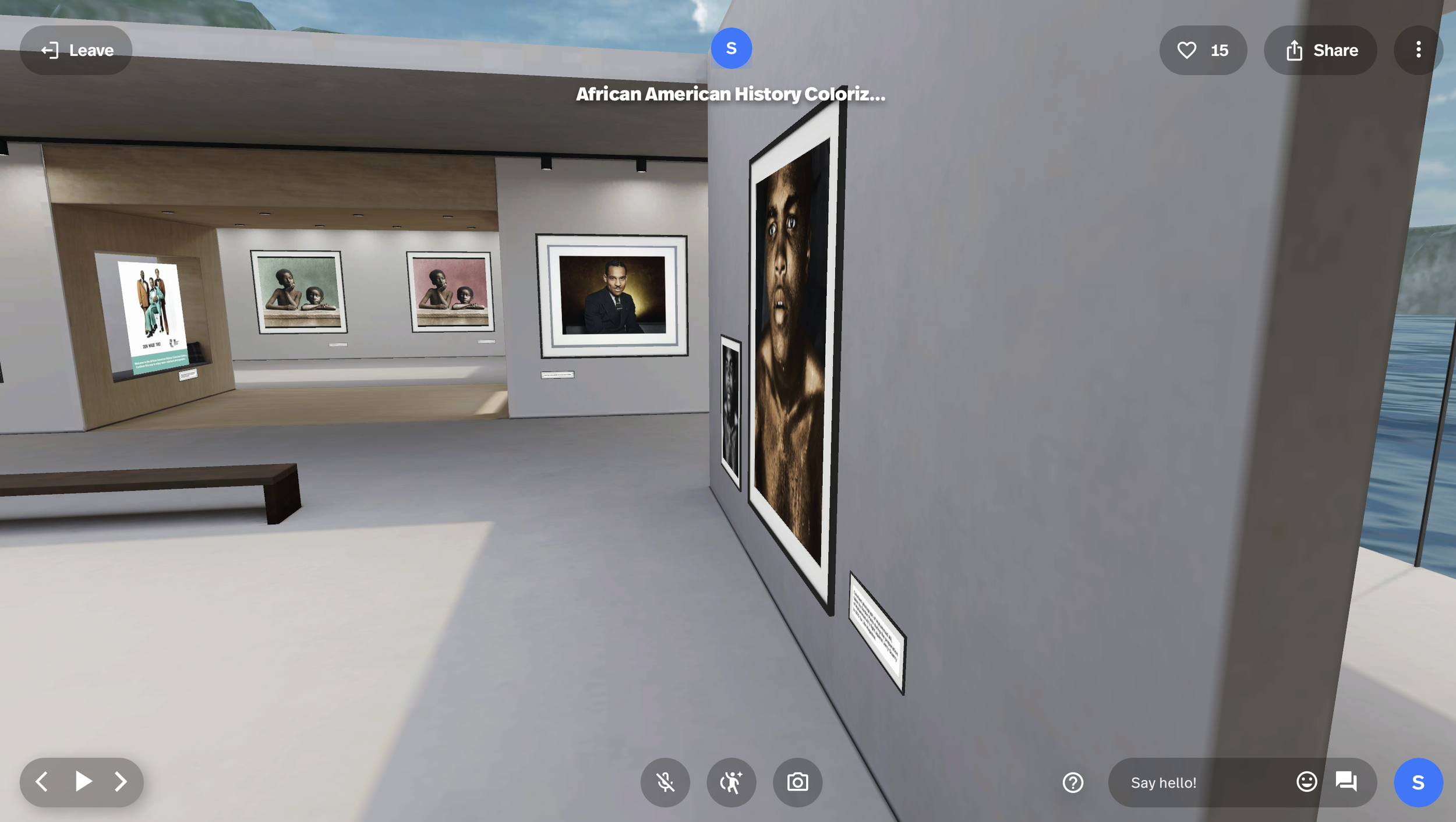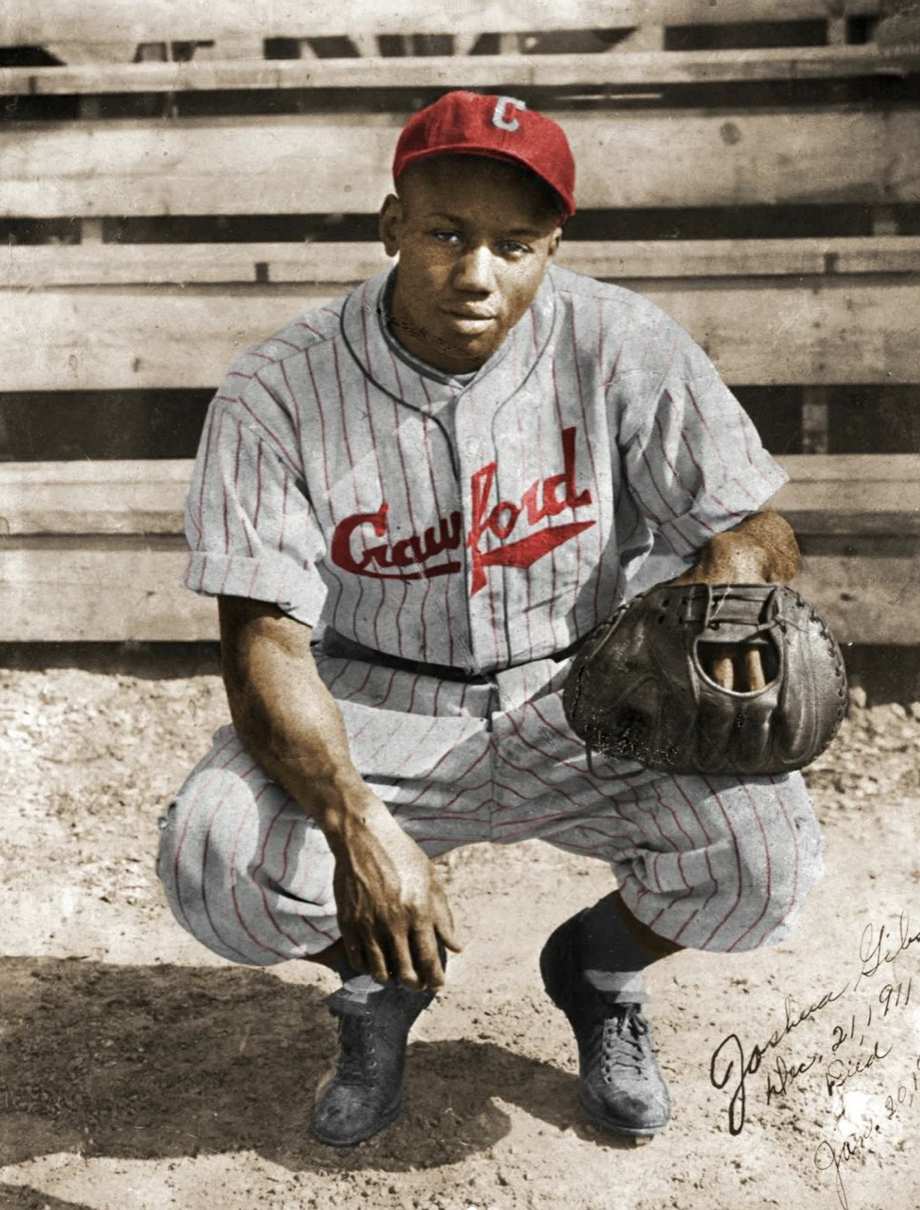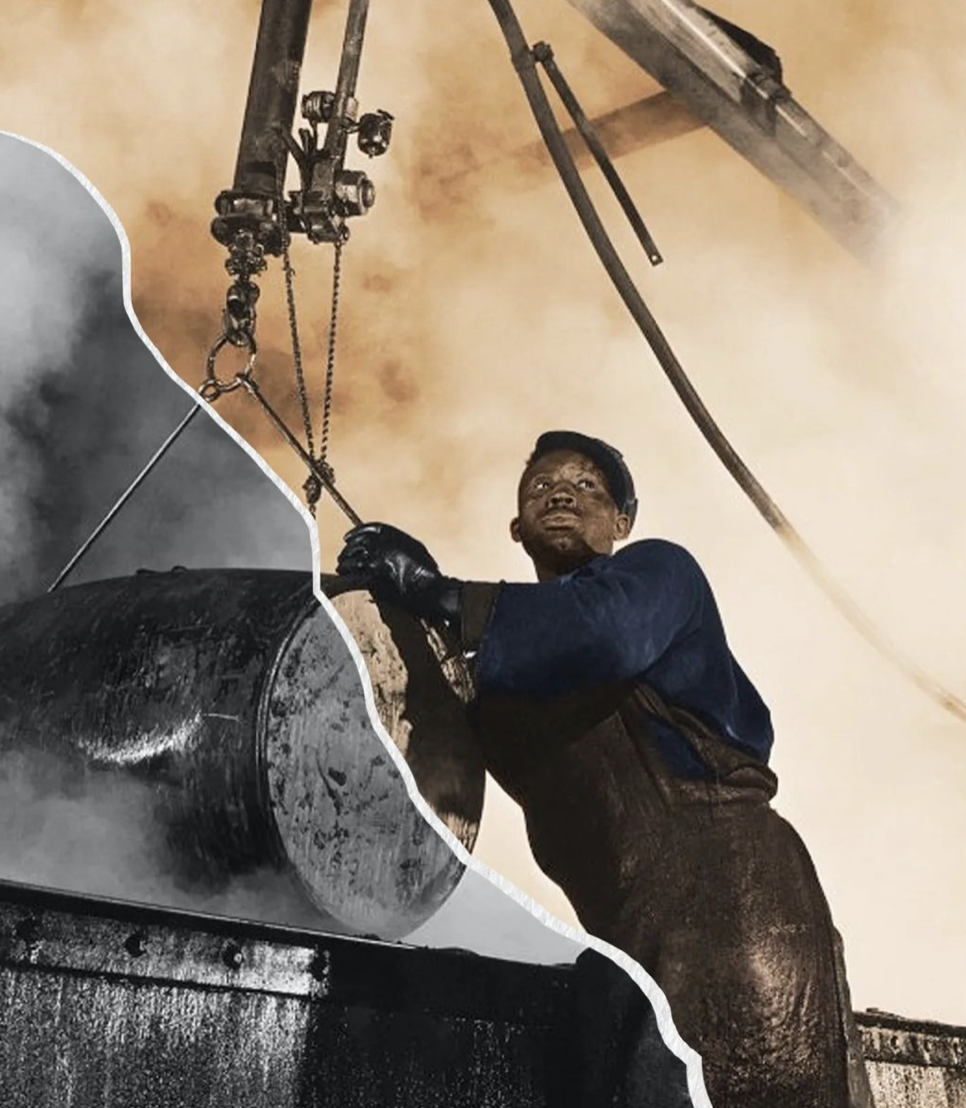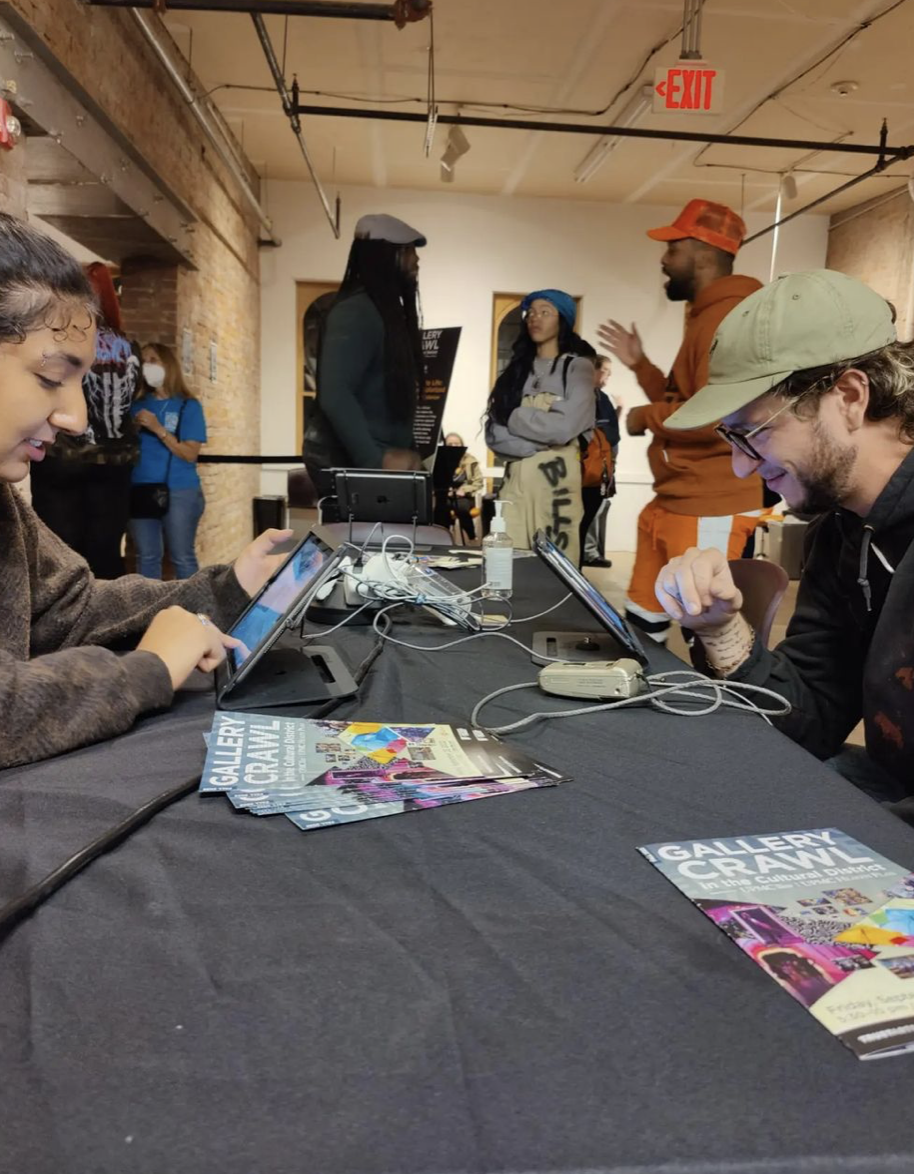As VR continues to advance, how does it intersect with artists? I interviewed Pittsburgh artist Randall Coleman about his spatial.io creation Bringing History to Life: African American Colorized Gallery. Coleman worked together with the Pittsburgh Cultural Trust to display his virtual gallery during their Gallery Crawl event on September 23, 2022. In our interview, it became clear that by working in VR, Coleman was branching out from his typical medium of photography. Coleman decided to experiment with spatial.io to create a unique virtual experience that highlighted the work of African American photographers, most of them being native to Pittsburgh. This spurred the question, why VR and why spatial.io?
Spatial is software that provides creators with the opportunity to bring their imagination into the metaverse. The metaverse, as described by Spatial is, “- an opportunity to empower creators to build their livelihood around the work. We see the metaverse as also an opportunity for creators, their supporters, and their fans to interact more closely than ever before. And the metaverse should be open and interoperable, where users can connect their spaces easily to other platforms, and seamlessly bring content from one to another, all enabled by the blockchain.” Founded by Anand Agarawala and Jinha Lee in 2016, spatial.io was made possible with the help of numerous investors. As described on the website, Spatial is intended to:
““-empower our users to leverage their beautiful spaces to share eye popping content, build a tight knit community, and drive meaningful sales of their creative works and products. We also empower our users to create beautiful and functional 3D spaces that they can mint as NFTs and sell/rent to others looking to host mind blowing experiences.””
Spatial.io is a platform where creators can begin their own projects as well as explore those of others in the ‘trending’, ‘popular’, ‘live now’, ‘newest’, and ‘recent’ spaces. The Creator Toolkit, arguably the most important item on the site, allows a creator to “Build interactive, engaging worlds and share them instantly to Web, iOS, Android, and Meta Quest.” Through this tool, the user is able to customize 3D environments to their liking, create immersive and Interactive stories (such as escape rooms, puzzles, or quests), import custom avatars, and will soon be able to create individualized vehicles to explore the metaverse community.
Another interesting aspect of the Spatial offerings is the community blog section, which lays out all the company’s social media channels and provides blog posts written for the press, community, and users. There are numerous tutorials and help pages available, as well as written updates released by spatial.io through this section. Some example blog posts are What are 3D NFTs and 4 Things You Can Do With Them! and Introducing Sketchfab: The Internet’s Most Expansive 3D Library is Now Integrated With Spatial. Spatial is available on Discord, Twitter, LinkedIn, Instagram, and YouTube for users to follow and keep up-to-date on any updates and trends.
In terms of pricing, Spatial is offered for free to “-creators looking to host exhibitions, meetups, and live events.” The features that are offered with the free subscription are as followed:
Create a public space to host NFT art exhibitions, meet ups, and live events
Upload your content in one click (images, videos, and 3D files)
Host up to 50 people in a room
Upload or buy a custom 3D environment
MetaMask, Google, Apple, and Microsoft login
Create a lifelike 3D avatar from a selfie
MetaMask/Google Drive/OneDrive file upload integration
Share your screen into the space
Create Sticky Notes to leave messages in your space
The second subscription option, Spatial+, is offered for $25/month or $20/month when billed annually to “creators looking to host more curated and controlled experiences.” The features that are offered with the paid subscription are as followed:
Everything in free, plus:
Token Gating: Access to Spaces
Overflow Groups: Allowing up to 500 people to experience a Space with instancing. (50 people per Space, with overflow up to 10 Spaces)
Host Tools: Including view only mode, muting and removing participants, and designating hosts
Live Translation
It is also laid out on this page that if the user is interested in hosting a special event, they are then able to contact Spatial for no additional fees or features to discuss their vision.
The final offering of Spatial is the ability to sell and buy NFTs (Non-Fungible Tokens). The partner site, OpenSea, is a platform that allows all Spatial creators and users to browse a page of NFT creations while also viewing analytics, floor prices, activity, and more. With this platform the user is able to search for mostly anything they want and an option for an NFT will appear.
Artists in spatial.io
Coleman’s creation is described by the Pittsburgh Cultural Trust as, “Colorized photographs bring new life to African American history. This virtual collection allows viewers to use iPads and virtual reality headsets to admire historical photographs as if they were captured today for an immersive gallery experience. The stories of the past are captured as black and white photographs, then the technique of colorizing brings them to the present day while allowing for individual interpretation. All photographs were colorized by Randall Coleman on a mobile device with the Snapseed application. He is available to teach this technique to anyone as young as fifth grade.”
View 1 of Coleman’s Gallery.
View 2 of Coleman’s Gallery.
In our conversation, Coleman explained his decision process for including specific photographs within the collection:
“Some of them were picked on purpose and some of them were just, you know, by happenstance, I just liked the photo. You have the Gordon Parks photo, he’s one of my favorite photographers, and I had to choose him. I have Teenie Harris in there, another African American photographer specifically based out of Pittsburgh—A Pittsburgh legend, Pittsburgh courier, a lot of their photographs came from him. The Carnegie Museum of Art has his collection at this point. You also have Deborah Willis in there, a curator and photographer as well. She put together an incredible book called Black Beauty, actually have it at my house. It’s just an incredible book that goes back into, I wanna say, the 1800s of African Americans, being photographed. And so I had to put her in, those are significant people to put in there.”
Colorized photograph of Josh Gibson, Pittsburgh Crawfords star catcher. Source: Randall Coleman's Instagram @reddvision
Colorized photo from 1944 by photographer Gordon Parks. Source: Randall Coleman’s Instagram @reddvision
As a participant in the Pittsburgh Cultural Trust’s Gallery Crawl, I was able to experience Coleman’s exhibition first-hand. Being one of the first exhibits I experienced on the crawl, I was immediately drawn to the setup with the VR headsets and iPads. As someone who had only worn a VR headset once prior to this experience, I was excited to have another opportunity to be able to explore VR rather than just read about it. Experiencing the exhibit with a friend, we were able to explore Randall’s digital gallery together, but on separate iPads. We were each given the chance to customize our own avatars to be able to explore the gallery, which we both then entered together. Although at times there were slight glitches in the software (an issue with the Spatial platform itself), I found the overall experience to be innovative and unique, especially given the fact that the photographs were mostly from Pittsburgh-based African American photographers.
Coleman’s ability to colorize the photos also introduced a unique perspective into the viewership—not only bringing old photographs to life but also introducing an understanding of the people who were photographed and their stories. During my discussion with Coleman, he explained his process in deciding to add a VR component, which was not originally a part of the plan:
Randall Coleman at the Pittsburgh Cultural Trust Gallery Crawl. Source: Randall Coleman
“The VR component of my gallery for the display actually came from the Trust. I went to them with the gallery in mind, and already had it set and ready to go, probably early in 2022. I pitched it to them and they said they liked it, but they wanted to have an in-person experience. My original idea was to only have it be virtual, I could be at home, have the whole thing on display, and people could visit online. But, they said ‘Hey, let’s have an in-person experience as well,’ which I’m glad we ended up having, so they had the idea of bringing in the VR. That’s how that specific idea came to be, however, I’ve been studying VR for a little bit in terms of just exposing myself to the concepts and what it can bring, as well as augmented reality as well. I love the concepts there. I think there is a lot of potential when it comes to augmented reality as well.”
Pittsburgh Cultural Trust Gallery Crawl participants using Randall’s gallery. Source: Randall Coleman’s Instagram @reddvision
Pittsburgh Cultural Trust Gallery Crawl participants using Coleman’s gallery. Source: Randall Coleman’s Instagram @reddvision
To wrap up the interview, I asked him where he sees the future of technology playing a role in art creation. His answer reveals the intersection between expression, aesthetics, and the medium of creation and consumption:
“When you ask me that question I think of it in two ways. I think that one side of creation is expression. The other side of creation is the aesthetic. They go hand in hand to a degree. However, you know, a lot of times people may focus on the aesthetic and there’s value to that. Whatever the medium is, that allows you to create a different aesthetic. It’s important to remember that expression, and what the intention is behind whatever it is that you end up creating. Also, keep in mind that one thing we learned when I was in grad school was the medium is the message. So you may try to transition from one medium to another and think, oh, I can do the same thing. It just may not come across the same way. So keep that in mind as well.”
To see more of Randall Coleman’s work, you can follow him on Instagram @reddvision and on his website.


